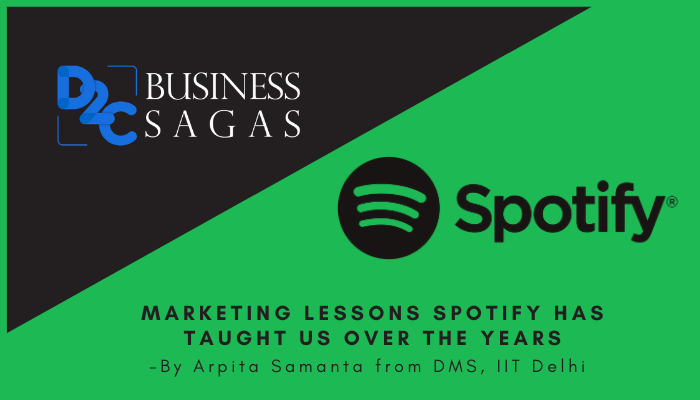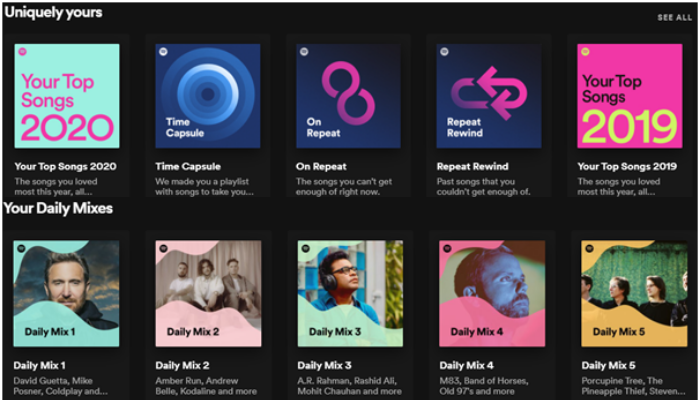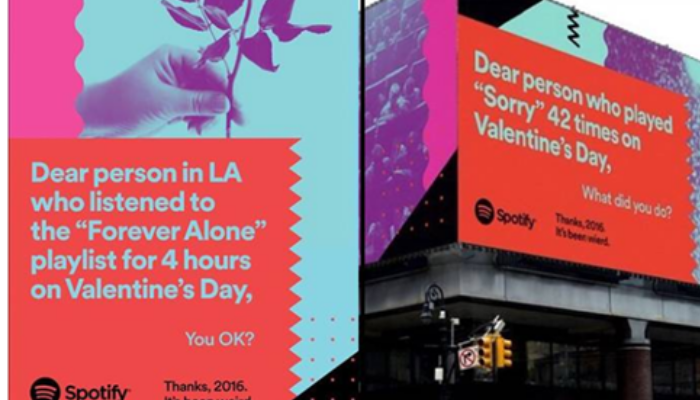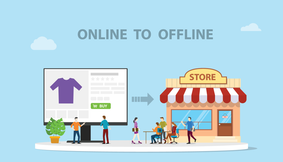Marketing lessons Spotify has taught us over the years -By Arpita Samata from DMS, IIT Delhi

The future of media is in streaming and Spotify - the pioneer of audio streaming, is one of the companies responsible for this paradigm shift. Launched in 2008, it has already garnered an estimated 286 million monthly active users at the beginning of 2020 and is now the market leader that controls 36% of the global streaming industry. Spotify is now available in more than 170 countries after expanding into over 80 new markets in February 2020. In India, within a month of its launch, it managed to cross 2 Mn active users and presently enjoys a market share of 15%.
But how did Spotify manage to achieve such a feat?
The answer lies in its marketing mix, particularly product and promotion. Spotify positioned itself as the go-to audio streaming platform for millennials and Gen Zs and aims to deepen its relationship with them. From its User Interface Design to quirky, humorous marketing campaigns, it engages deeply with both artists and listeners. Let’s talk about the numerous marketing lessons that one can learn from Spotify:
Differentiate oneself from the rest
While others saw streaming as access to music, Spotify focused on music discovery. The joy of discovering new music is unparalleled and Spotify uses this to the fullest. It is one of the major reasons behind Spotify’s high customer retention rate.
“We’re not really in the same business as everyone else anymore. We’re in the business of discovery, and we think everyone else is still in the business of access. But access isn’t enough anymore,” said R&D boss Gustav Soderstrom. 30% of Spotify streams are “algotorial” – driven by its algorithmic or editorially-programmed playlists with very high accuracy.
Be global, but localization is primary
From Bhangra beats and melodious Bengali songs to Beatles, Coldplay and everything in between, Spotify has it all. Unlike its biggest global competitor - Apple Music, Spotify focuses on localization to capture market share. It has dedicated curated playlists in many regional languages to engage locally. Since around 80% of Spotify’s marketing is done through social media campaigns, it has separate official channels for major markets like Spotify India, Spotify Russia, Spotify Mexico, etc. This enables them to better engage with both music listeners and artists.
Cater to both - individuals and the community
Other than the usual segmentations done by music streaming companies, Spotify builds communities of users based on moods. It has 105 types of mood playlists available and constantly keeps updating them. It also does not forget to cater to individual choices. Based on the songs we search and listen to, it generates six different category playlists daily (Daily Mix 1-6) and a Weekly Discovery.
Apart from this, it also curates a playlist of new releases based on our listening history called Release Radar. Another simple yet innovative product it released was the Time Capsule - a curated playlist that gives listeners a pleasant dose of nostalgia. It is a personalized playlist that helps listeners lean to their musical past. Their newsroom post says "The playlist that got you before you got you". The sweet pleasure "Time Capsule" gives will surely bring a smile on the listeners face and make one look forward to Spotify even more.

Put the collected data to good use
Any streaming service collects a lot of information about its users. However, unlike others, it creates marketing campaigns from these collected data. Memes are a great way to connect with millennials. It’s short, smart, and immediately grabs your attention. Create campaigns with data to engage with, and encourage artists and no campaign is complete without some quality humour.
Be fluid with your marketing strategy
Another lesson that we learn from Spotify amongst the many marketing lessons is how it frequently changes its tune to keep the streaming giant fresh. Spotify’s marketing campaigns are not fixed. It changes every year based on the trends and the latest events that take place.

For example, let's take the year 2016. It was the year President Donald Trump got elected when the UK decided to pull off from the European Union. Spotify’s marketing team recognized the oddity of the year and they capitalized on it. The company began its first data-driven marketing campaign, creating billboards that poked fun at users who had listened to different songs. On the billboards, in small black letters, were the words: “Thanks, 2016. It’s been weird.”
Similarly, 2020 has been an exceptionally tough year and hence this years’ campaign is all about gratitude. It engaged the podcasters and music artists in a heartwarming gratitude campaign.‘Wrapped 2020’ didn’t just help Spotify’s brand image, it brought home bags of cash too. Stocks jumped up by 16 percent to an all-time high on a wave of powerful engagement from tens of thousands of Spotify users sharing their best moments on the platform.
Augment ‘Product’ the right way
In the many marketing lessons, Spotify also taught us how to not limit yourself to one field like it didn’t limit itself to only music. Spotify launched its podcast feature in 2015 and has quickly gained market share ever since. It has set itself up to lead the podcast market by investing in exclusive content, empowering show creators, and the pandemic was the perfect push it needed.
From Raghuram Rajan to Kim Kardashian, from health advice to managing personal finance, Spotify now has a collection of more than 2 million podcasts. This year, Spotify inked a multi-year agreement with Warner Bros. and DC to carry scripted podcast series based on the comics imprint's superheroes.
It does not stop at the creation of the podcast, it publishes a gratitude post on its social media platforms. It is also nudging the listeners to create their own podcasts to increase engagement.
Monetize your augmentation - Introducing Spotify podcasts advertising
This November Spotify acquired podcast advertising and publishing company Megaphone opening a pool of 60,000 new audience segments which is used by more than 20,000 marketers and publishers. Combining Spotify's Streaming Ad Insertion technology with the Megaphone Targeted Marketplace, marketers will have more flexibility with audience-based targeting.
Ad spending on podcasts is forecasted to rise 15% to about $1 billion this year according to PwC and the percentage of advertisers that added podcasts to their annual media plans had nearly doubled to 47% from a year earlier as more marketers sought to reach the growing audience for spoken-word programming.
Despite its many marketing strategies, the picture is not completely rosy for Spotify. It has its own set of challenges. Time and again, artists have accused Spotify of ‘underpaying’, ‘misleading’ and ‘exploiting’ artists for financial gain. This year, a union of musicians has launched the ‘Justice at Spotify’ campaign demanding a minimum of one cent per stream from the ongoing $.00038 a stream. Only time will answer how Spotify deals with these issues at hand.
This article was submitted by Arpita Samanta, in response to D2C Business Sagas. If you'd like to send your story, click here.
Login to continue reading
And access exclusive content, personalized recommendations, and career-boosting opportunities.
Blogs you need to hog!

What Innovation Does For Efficiency and Competitiveness in a Corporate Sector?

Online to Offline Commerce- Everything one needs to know

How Do You Work Around Branding Guidelines To Be Guidelines And Not Limitations? | Alekhya, Brand Manager- Vivel, ITC | Dove, Unilever













Comments
Add comment